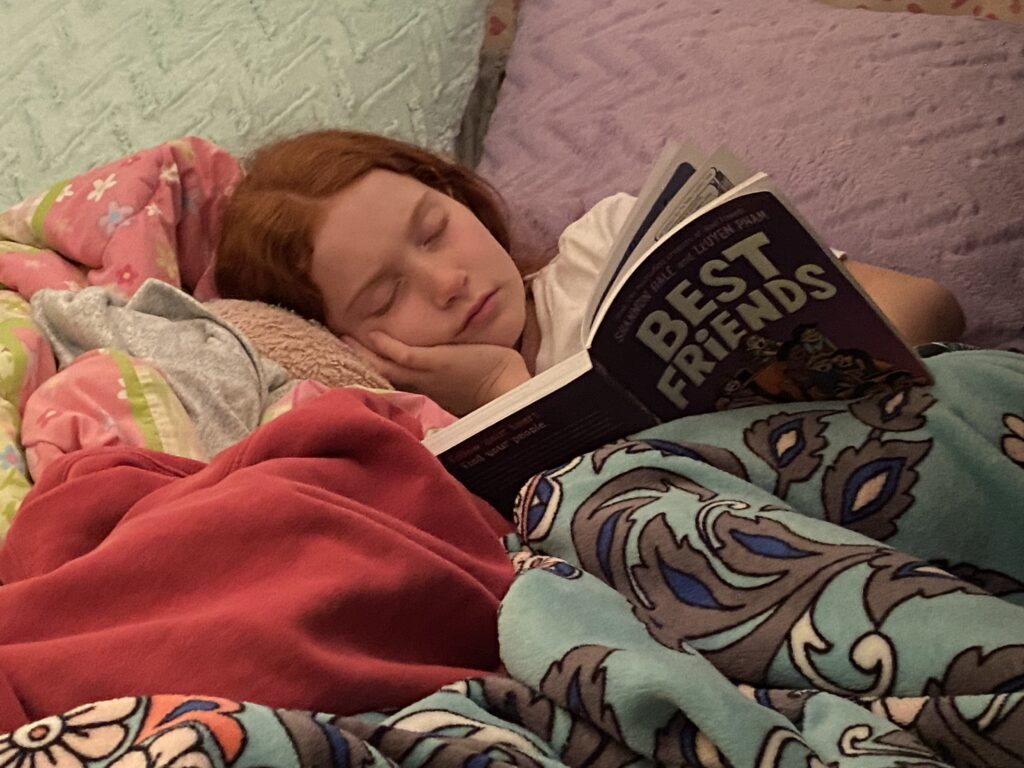This question was posed to me at a parent-teacher conference early in my teaching career. Is it okay for our son to read graphic novels at home? The parents were concerned that these text were not challenging their son enough.
Their “problem” was they couldn’t get him to read anything other than graphic novels at home and worried they were not rigorous enough to make him a successful reader longterm. He would devour graphic novels but fought tooth and nail to read “traditional” books.
This student was extremely behind in reading just one year before I had him. While he was still below grade level in fourth grade, he made enormous strides since the beginning of third grade. What happened to help him turn this corner? One big part of the story is that he went to a comic book convention with his father the summer before third grade and got hooked on graphic novels.
I can personally attest to the interest in graphic novels. My ten-year-old daughter is a reluctant reader. She doesn’t enjoy reading traditional texts. We’ve made numerous trips to the book store, placed book orders through school, and even tried e-readers. No luck. She still has not found the book or genre that sparks an interest in reading chapter books.
Graphic novels are an entirely different topic. She can’t put these books down. She has read and reread titles like Smile, Best Friends, Real Friends, and Guts. Just this weekend I had to ask her to put a book down during dinner; it was a graphic novel. Later that night I found her asleep in bed with the book still open.

Research supports the idea that graphic novels help reach reluctant readers. The combination of pictures, graphics, and fewer words is appealing to students who don’t enjoy traditional texts as much. They also help with comprehension, critical thinking skills, and vocabulary acquisition.
But what about the reading level in these books? Certainly they can’t challenge students the same way a traditional text does. Can they? Research out of the University of Oregon has shown that graphic novels are not necessarily easier to read despite their format. According to the study “comic books average 53.5 rare words per thousand.” That number outpaces children’s books (30.9) and even inches ahead of adult books (52.7).
The topics students encounter in graphic novels go far beyond Garfield’s basic fascination with lasagna. In one of my daughter’s favorite graphic novels, Smile, the main character feels self-conscious after she is forced to wear headgear, braces, and even an appliance with false teeth, following an accident. This all happens while she is trying to navigate friendships and make her way through middle school. In the end, the reader learns that it doesn’t matter what you look like on the outside, but it’s who you are on the inside that really counts. That’s definitely a lesson I want me daughter to learn regardless of the format of the text.
So what did I say to the parents back at the conference? The same thing I say to my daughter. I want students to love reading. If he’s found a text he loves to read, then let him get lost in that book, regardless of what it looks like.
